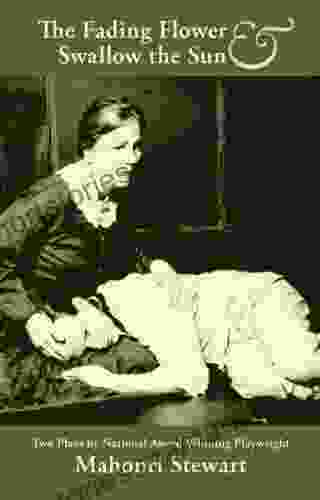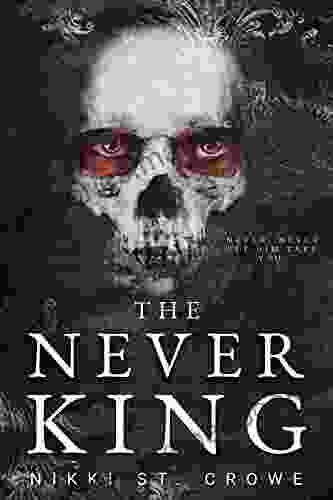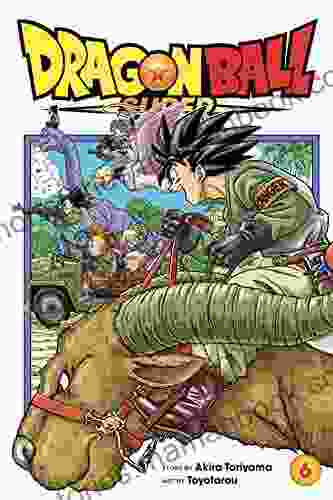The Powder Room: The Untold Story Of Indian Fashion

: Unveiling the Enigmatic Fabric of Indian Fashion
India, a land steeped in ancient civilizations, vibrant traditions, and cultural diversity, has long been a cradle of fashion innovation. From the intricate textiles of the Indus Valley Civilization to the opulent garments of royal courts, Indian fashion has evolved over millennia, reflecting the nation's rich history, cultural heritage, and artistic sensibilities. Yet, beyond the surface of vibrant hues and intricate embroideries lies a fascinating untold story, a tapestry of myriad influences, socioeconomic dynamics, and the intricate interplay of tradition and modernity.
The Roots of Indian Fashion: From Ancient Origins to Mughal Splendor
The origins of Indian fashion can be traced back to the Bronze Age, with evidence of elaborate textiles and garments depicted in archaeological findings from the Indus Valley Civilization. These early civilizations developed sophisticated techniques for spinning, weaving, and dyeing fabrics, creating intricate patterns and designs that showcased their artistic prowess.
During the Vedic period (circa 1500-500 BCE),clothing played a significant role in social and ritual practices. Garments such as the dhoti (a draped cloth worn by men) and the sari (a long, unstitched fabric worn by women) emerged as essential elements of daily life and religious ceremonies.
4.1 out of 5
| Language | : | English |
| File size | : | 1043 KB |
| Text-to-Speech | : | Enabled |
| Enhanced typesetting | : | Enabled |
| Word Wise | : | Enabled |
| Print length | : | 352 pages |
| Screen Reader | : | Supported |
With the advent of the Mughal Empire in the 16th century, Indian fashion underwent a transformative period. The Mughals, with their Persian and Central Asian influences, introduced new fabrics, designs, and techniques to Indian craftsmanship. Opulent silks, velvets, and brocades adorned the courts of Mughal emperors, while intricate embroidery and embellishments became synonymous with royal fashion. This era marked the fusion of indigenous Indian aesthetics with influences from the Middle East and Central Asia, creating a unique and vibrant sartorial landscape.
The Colonial Interlude: Western Influences and the Rise of Nationalism
The arrival of European colonial powers in the 18th century had a profound impact on Indian fashion. British rule introduced Western fabrics, tailoring techniques, and fashion sensibilities, leading to a gradual shift in the dress habits of the Indian elite. While some embraced Western styles, others sought to preserve traditional attire as a symbol of cultural identity.
The rise of the Indian independence movement in the 19th century witnessed a resurgence of interest in traditional Indian textiles and garments. Nationalist leaders such as Mahatma Gandhi advocated for the revival of hand-spun and handwoven fabrics, known as khadi, as a means of economic self-reliance and cultural resistance. The khadi movement became a symbol of Indian nationalism and played a significant role in shaping the post-colonial fashion landscape.
The Post-Independence Era: A Crucible of Creativity and Cultural Exchange
After India gained independence in 1947, the country's fashion industry entered a new phase of evolution. Indian designers began to draw inspiration from both traditional and Western influences, creating a dynamic synthesis of styles. Designers such as Satya Paul and Ritu Kumar became pioneers of a modern Indian aesthetic, incorporating traditional motifs, fabrics, and techniques into contemporary designs.
The 1980s and 1990s witnessed a surge in global interest in Indian fashion, as designers like Rohit Bal and Tarun Tahiliani showcased their collections on international runways. Bollywood films and television shows also played a significant role in popularizing Indian fashion, with leading actresses setting fashion trends that were emulated by millions.
The 21st Century: A Globalized Fashion Hub
In the 21st century, Indian fashion has emerged as a major force in the global fashion industry. India is now home to a thriving ecosystem of designers, manufacturers, and retailers, catering to both domestic and international markets. Indian designers have gained recognition for their innovative designs, showcasing the country's rich textile heritage while embracing contemporary trends.
The global fashion industry has also taken notice of India's vast potential. International brands have established partnerships with Indian designers and manufacturers, seeking to tap into the country's skilled workforce and diverse cultural influences. India has become a major hub for fashion production, with a growing number of factories and workshops catering to both domestic and international demand.
Sustainability and Ethical Fashion: A Growing Movement
In recent years, there has been a growing awareness of the environmental and social impact of the fashion industry. Indian designers and manufacturers are increasingly embracing sustainable practices, such as using eco-friendly fabrics, reducing waste, and promoting ethical working conditions. A number of organizations are working to promote sustainability in the Indian fashion industry, including the Sustainable Fashion Forum (SFF) and the Fashion Revolution India.
The Future of Indian Fashion: A Fusion of Tradition and Innovation
The future of Indian fashion looks bright, with designers and manufacturers continuing to push the boundaries of creativity and innovation. Traditional textiles and techniques will remain central to the industry, while designers are also embracing new technologies and sustainable practices. Indian fashion is poised to continue its ascent on the global stage, showcasing the country's rich cultural heritage while adapting to the demands of the modern world.
: A Timeless Tapestry of Fashion, Culture, and Identity
The untold story of Indian fashion is a tapestry woven with threads of history, culture, innovation, and creativity. From the intricate textiles of ancient civilizations to the opulence of Mughal courts, from the influence of colonial powers to the rise of modern designers, Indian fashion has evolved into a vibrant and dynamic industry that reflects the nation's rich heritage while embracing the trends of the global fashion landscape. As India continues to grow in economic and cultural influence, its fashion industry is poised to play an increasingly significant role on the world stage, showcasing the country's unique blend of tradition and modernity.
4.1 out of 5
| Language | : | English |
| File size | : | 1043 KB |
| Text-to-Speech | : | Enabled |
| Enhanced typesetting | : | Enabled |
| Word Wise | : | Enabled |
| Print length | : | 352 pages |
| Screen Reader | : | Supported |
Do you want to contribute by writing guest posts on this blog?
Please contact us and send us a resume of previous articles that you have written.
 Top Book
Top Book Novel
Novel Fiction
Fiction Nonfiction
Nonfiction Literature
Literature Paperback
Paperback Hardcover
Hardcover E-book
E-book Audiobook
Audiobook Bestseller
Bestseller Classic
Classic Mystery
Mystery Thriller
Thriller Romance
Romance Fantasy
Fantasy Science Fiction
Science Fiction Biography
Biography Memoir
Memoir Autobiography
Autobiography Poetry
Poetry Drama
Drama Historical Fiction
Historical Fiction Self-help
Self-help Young Adult
Young Adult Childrens Books
Childrens Books Graphic Novel
Graphic Novel Anthology
Anthology Series
Series Encyclopedia
Encyclopedia Reference
Reference Guidebook
Guidebook Textbook
Textbook Workbook
Workbook Journal
Journal Diary
Diary Manuscript
Manuscript Folio
Folio Pulp Fiction
Pulp Fiction Short Stories
Short Stories Fairy Tales
Fairy Tales Fables
Fables Mythology
Mythology Philosophy
Philosophy Religion
Religion Spirituality
Spirituality Essays
Essays Critique
Critique Commentary
Commentary Glossary
Glossary Bibliography
Bibliography Index
Index Table of Contents
Table of Contents Preface
Preface Introduction
Introduction Foreword
Foreword Afterword
Afterword Appendices
Appendices Annotations
Annotations Footnotes
Footnotes Epilogue
Epilogue Prologue
Prologue Jc Gilmore
Jc Gilmore Mojisola Adebayo
Mojisola Adebayo Edith Mackenzie
Edith Mackenzie Al Ewing
Al Ewing Ovide
Ovide Arabella Carter Johnson
Arabella Carter Johnson Richard Bivins
Richard Bivins Billy Jensen
Billy Jensen Peter M Mcginnis
Peter M Mcginnis Sage Delio
Sage Delio Alphonso W Knight Sr
Alphonso W Knight Sr Iris Gower
Iris Gower Leigh James
Leigh James Judith Bowman
Judith Bowman Matt Hranek
Matt Hranek Ugur Akinci
Ugur Akinci Kathleen O Neal Gear
Kathleen O Neal Gear Sappho
Sappho Inge Heyer
Inge Heyer Manju Nambiar
Manju Nambiar
Light bulbAdvertise smarter! Our strategic ad space ensures maximum exposure. Reserve your spot today!

 Terry BellUnveiling the Lethal Tender Team Reaper Thriller: A Journey into the Abyss of...
Terry BellUnveiling the Lethal Tender Team Reaper Thriller: A Journey into the Abyss of... Drew BellFollow ·17.3k
Drew BellFollow ·17.3k Juan RulfoFollow ·6.7k
Juan RulfoFollow ·6.7k Simon MitchellFollow ·11.5k
Simon MitchellFollow ·11.5k Julian PowellFollow ·12.6k
Julian PowellFollow ·12.6k Rod WardFollow ·16.1k
Rod WardFollow ·16.1k Aleksandr PushkinFollow ·17.1k
Aleksandr PushkinFollow ·17.1k Mario Vargas LlosaFollow ·10.1k
Mario Vargas LlosaFollow ·10.1k Yukio MishimaFollow ·7.8k
Yukio MishimaFollow ·7.8k

 Bob Cooper
Bob CooperThe Fading Flower and Swallowing the Sun: Unveiling the...
"The Fading Flower and...

 Jesus Mitchell
Jesus MitchellLa Danza by Rossini: A Captivating Work for Flute Quartet
La Danza is a captivating composition for...

 Ivan Turgenev
Ivan TurgenevThe Never King: Vicious Lost Boys - A Dark and Twisted...
In the realm of Neverland, where shadows dance...

 Herb Simmons
Herb SimmonsThe Stone of Inheritance: Unraveling the Mysteries of a...
A Legacy of Enigmas In the annals of history,...
4.1 out of 5
| Language | : | English |
| File size | : | 1043 KB |
| Text-to-Speech | : | Enabled |
| Enhanced typesetting | : | Enabled |
| Word Wise | : | Enabled |
| Print length | : | 352 pages |
| Screen Reader | : | Supported |














